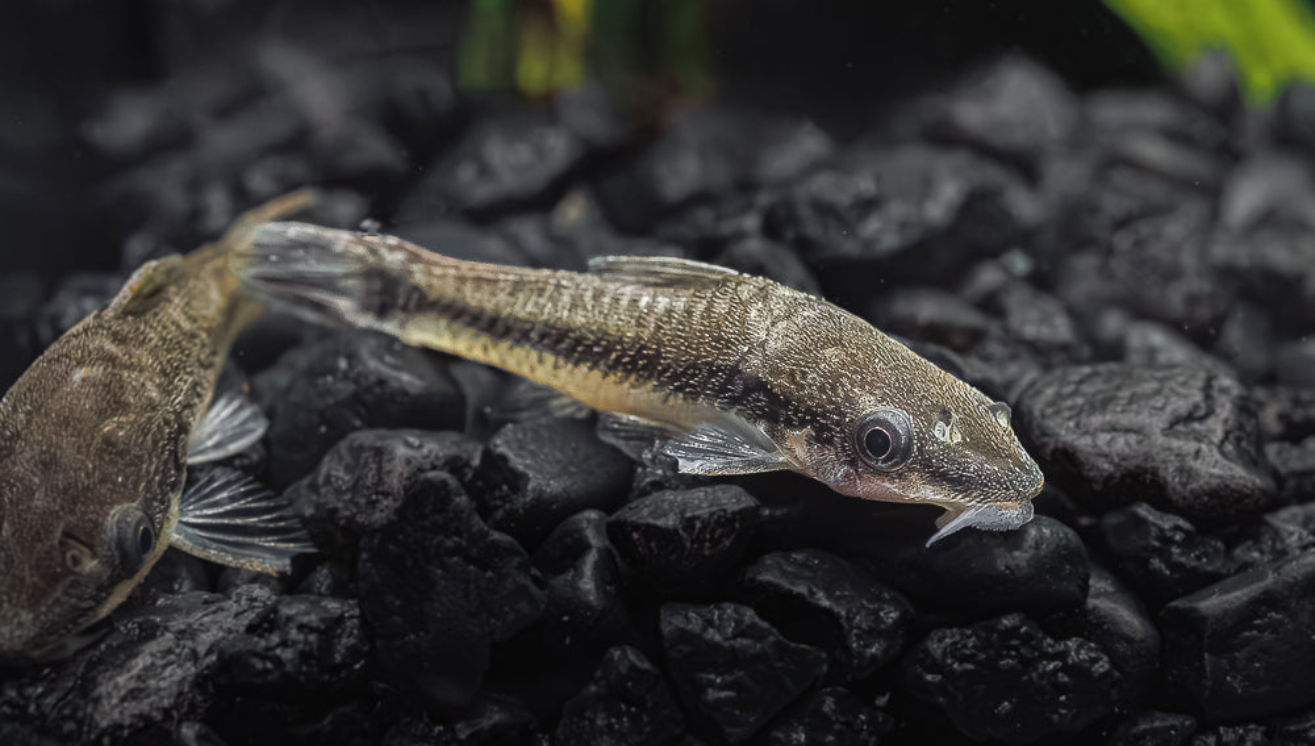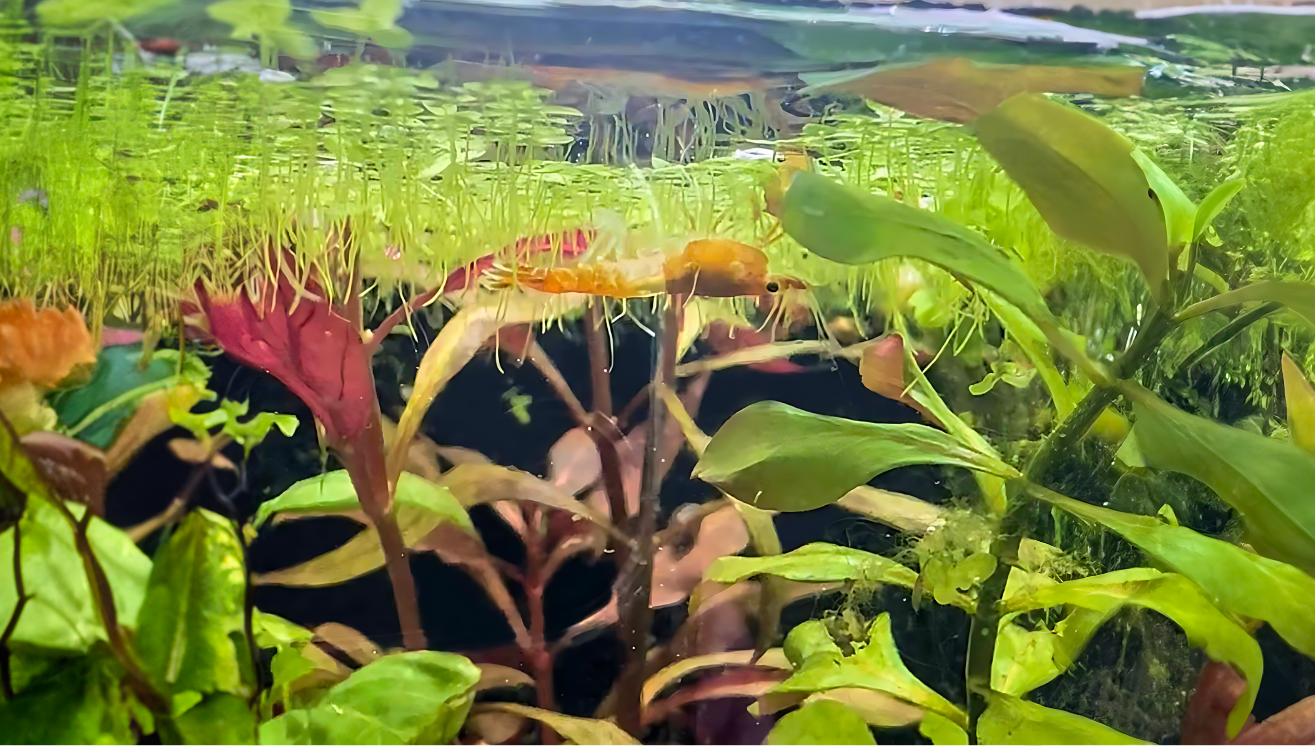Your Cart is Empty
🚚 Flat-Rate FedEx Priority Overnight — Just $26.99 (Limited-Time Special!) | FREE over $200
🚚 Flat-Rate FedEx Priority Overnight — Just $26.99 (Limited-Time Special!) | FREE over $200
🚚 Flat-Rate FedEx Priority Overnight — Just $26.99 (Limited-Time Special!) | FREE over $200
by Amanda Lupton August 21, 2020 4 min read

Cherry shrimp are valued for their unpretentious maintenance, high reproduction rate, and the undoubted benefits that these small invertebrates bring, eating food remains and algal fouling.
You can also watch our complete guide on how to set up an aquarium for cherry shrimp:
In addition, bright red cherry shrimp are able to revive any aquarium landscape and look beautiful against the background of lush greenery. They are a good choice for beginner aquascapers, as they can exist in a wide range of water parameters, are not as demanding as other shrimp (e.g., crystal red shrimp), and even a small tank will do.
| Name | Cherry shrimp |
|---|---|
| Scientific name | Neocaridina heteropoda var. red |
| Kingdom | Animalia |
| Type | Arthropod |
| Subtype | Crustacean |
| Class | Malacostraca |
| Family | Atyidae |
| Genus | Neocaridina |
| Aquarium size | 40 L for a colony (10 L minimum for a small group) |
| Difficulty of care | Very easy |
| Water parameters | Temperature: 22–29 °C (72–84 °F); pH: 6.5–8.0; kH: 3–10 |
| Life span | 1–2 years |
| Body size | Up to 4 cm (1.5 in) |
| Color | Red (also bred in orange, yellow, green, and blue morphs) |
| Feeding | Omnivore |
Cherry shrimp grow up to 2.5–4 cm in length. Their translucent, laterally compressed body consists of a cephalothorax and abdomen. They have small legs on the front segments and two pairs of antennae. The carapace covers the gill chambers, and their back is usually a pinkish-red with lighter spots that create a marble pattern. Antennae (or “whiskers”) are white or pink.
Their color intensity can change instantly based on nutrition, water parameters, surrounding vegetation, tankmates, and even age. On darker substrate, they appear richer; stress can cause them to fade. Selective breeding has produced stable color strains such as “Red Fire.”
Females are generally larger, rounder, and brighter than males. They also develop a yellowish “saddle” (their ovaries) behind the head when mature.
Cherry shrimp molt regularly, leaving empty shells on the substrate. You don’t need to remove these exuviae—they’re a valuable source of nutrients. When molting, shrimp are vulnerable and need hiding spots such as moss or fine-leaved plants.

Successful molts require sufficient calcium and iodine in the water. Iodine is a coenzyme in chitin synthesis; deficiency can lead to failed molts and death. Consider using an aquarium supplement that provides iodine.
Females are larger, deeper red, and have a curved abdomen. The yellow “saddle” is the clearest sign of a mature female. Green saddles (from wild genetics) indicate green eggs; yellow saddles indicate yellow eggs. Egg color does not affect egg quality.
Breeding cherry shrimp is effortless. With a healthy group of 10–20 shrimp, they’ll reproduce on their own. Females release pheromones that attract males when their eggs are ready.
If you’d like more detail, watch this video:
Eggs develop under the female’s tail for about three weeks. During this time she ventilates them with fresh water. Juveniles hatch fully formed and are independent immediately, reaching adult color by around three months.
Cherry shrimp are peaceful grazers and do best in species-only tanks or with very small, non-aggressive fish (e.g., guppies, neon tetras, otocinclus). Active or larger fish can stress or eat shrimp—dense vegetation and hiding spots are essential.
Maintain at least 20 L of water and keep water changes to 15–20% every 7–10 days. Avoid very soft water—shrimp need calcium for shell health. Sudden parameter changes, overfeeding, or overcrowding can harm them. Key parameters:
Provide live plants such as cladophora, Ceratopteris thalictroides, or Java moss. Floating plants help shrimp feel secure.
Cherry shrimp are omnivores and will scavenge fish food, biofilm, and detritus. In a dedicated shrimp tank, offer:
Feed once daily, providing only what they can consume in a couple of hours to avoid water quality issues. Overfeeding can lead to ammonia spikes and shrimp mortality.
You can learn more about feeding frequency here:
Even small fish like Apistogramma can nip shrimp, so choose tankmates carefully. Shrimp-only setups are ideal for maximum safety.

Cherry shrimp can suffer from:
Acclimate shrimp slowly over at least one hour by floating their bag in the tank and gradually adding tank water. Provide moss or plant sprigs in the bag so they can cling during transport.
After introduction, they may hide for 2–3 days as they recover from stress and complete a molt.
If you already keep shrimp, quarantine can sometimes be skipped if you trust your supplier. However, a 10 L quarantine tank with substrate, plants, filter, and aeration is ideal to prevent disease introduction.
If you have more questions, check out our full aquarium resources online!
Comments will be approved before showing up.

by Brooke Lees October 04, 2024 2 min read
Aquarium plants do much more than add beauty to a tank, they help maintain water quality and provide natural shelter for your aquatic pets. Among the many available options, Hornwort and Anacharis stand out for their versatility, ease of care, and benefits to aquarium ecosystems. Let’s dive deeper into the differences and similarities between these two popular plants.

by Brooke Lees September 20, 2024 2 min read

by Brooke Lees September 13, 2024 3 min read